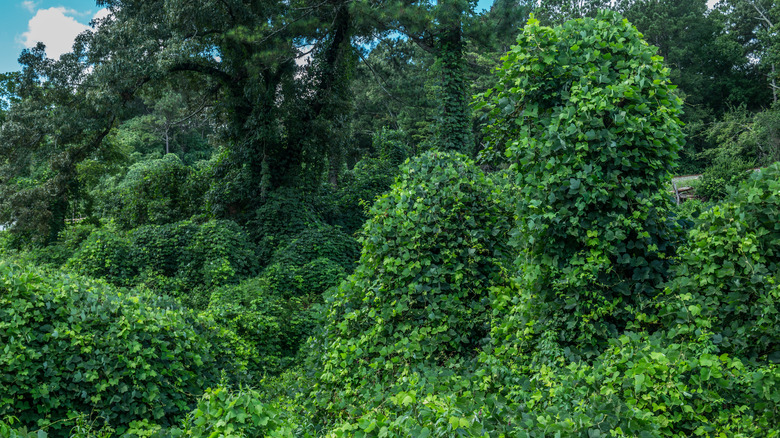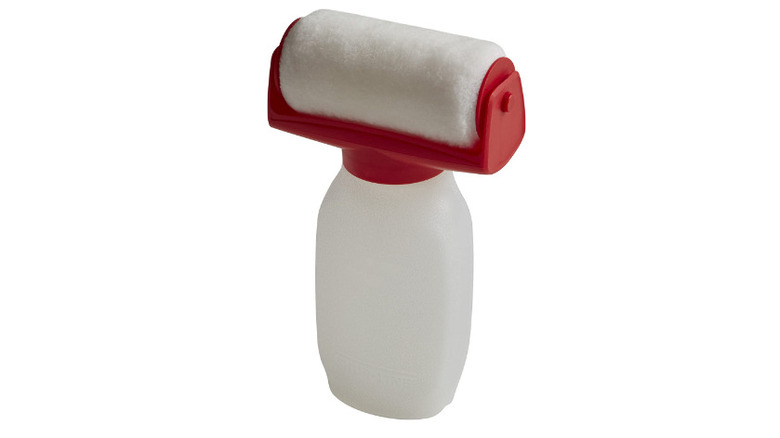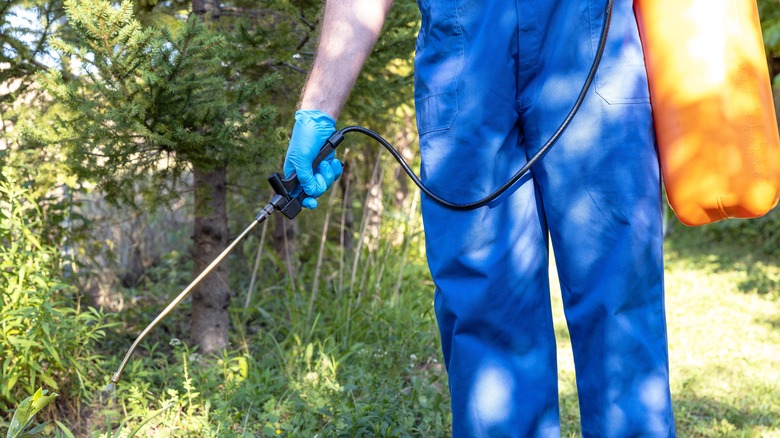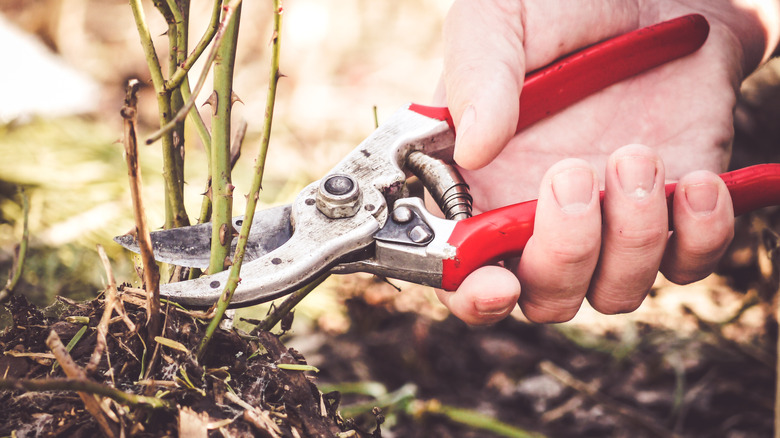How To Safely Remove Invasive Plant Species From Your Lawn And Garden
We may receive a commission on purchases made from links.
An invasive plant species is a plant that is not native to the region in which it is growing. These types of plants are typically introduced to the area either by accident or intentionally, states The United States Geological Survey. Kudzu is just one example of a vine deliberately introduced to the United States. Native to regions of Asia, Kudzu came to America as an ornamental plant but is now considered "the vine that ate the south," according to The Nature Conservancy.
Invasive plant species are harmful to the environment in many ways. Because they have no natural predators or diseases outside of their homeland, they out-compete native plants for resources. In the case of Kudzu, they can literally suffocate every other plant in their path. The loss of native plants creates a domino effect. Bees, butterflies, and birds that rely on the nectar and seeds of native plants no longer have a food source on their migration path. Other animals and reptiles also rely on these plants, so the devastation continues. While you cannot do much about acres of Kudzu, you can control the invasive plants that threaten to take over your lawn and garden. Every state is affected by different invasive plant species, and you can find yours by visiting the National Invasive Species Information Center.
Materials
To remove invasive plants — and any other unwanted woody bushes or trees — the first material you need is brush killer. This product is available in most garden centers in the herbicide section. The type of brush killer you should buy depends on the season you plan to use it, states GardenTabs. Select a pre-emergent herbicide if you are clearing an area in the spring or a post-emergent herbicide in the fall or winter. Next in importance is heavy-duty rubber gloves to protect your skin from the harsh chemicals in these products. Be sure to closely read the label to see if further safety measures are required.
A small paint roller with a vessel that holds liquid, like this Shur-Line paint roller on Amazon, is an excellent choice for the application process. Another option is an empty envelope moistener like this one. You also need a sharp set of loppers (the extendable kind is helpful if you cannot do a lot of bending) and a good pair of pruning shears. A small bottle of red acrylic craft paint is helpful but not necessary.
Preparation
Brush killer is designed to be sprayed on plants, but this process can result in some unwanted effects. If there is even the slightest breeze while spraying, you can do irreparable damage to the plants you want to keep, or you can accidentally ruin your neighbor's landscaping if the herbicide drifts. Also, if you spray rather than "paint" the herbicide, the soil will absorb more product. This safer process also limits the amount of herbicide that ultimately ends up in the groundwater.
Green Shoot News suggests applying brush killer after the plant has gone dormant, so it's ideal for preparing your mixture in the fall, but this process can be used year-round with the right product. Wearing safety gloves, carefully pour the brush killer into your application vessel, add a few drops of red paint, and mix gently. Gather the rest of your supplies, and you are prepared to tackle those pesky plants.
Eliminating invasive plants
If you have a lot of nuisance plants to remove, work in one small section at a time. Use your pruning shears or loppers to cut plants as close to the ground as possible. By cutting the stems close to the soil line, you will prevent tripping hazards, and as the plants die back, you will not have to go back and remove all those dead stems.
Next, while wearing all the necessary safety equipment, paint your brush killer mixture onto the freshly cut surface. You can tell which plants have been treated because those cuts will be red, so you won't have to worry about remembering which plants you have already used the brush killer. The plant's vascular system — the part that transports water and other products from leaf to root — will transport the liquid brush killer from the large cut down to the roots, according to Gordon's, ultimately killing the plant.



